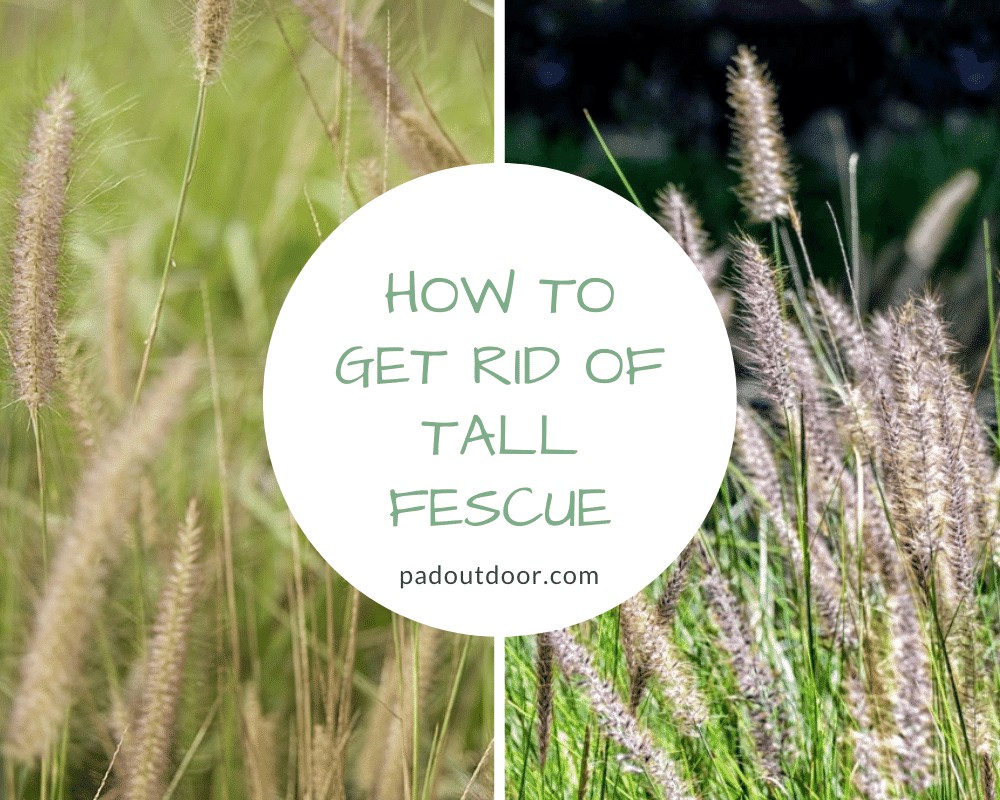Fine fescues blend well and make the grass look denser, but the tall fescues are aesthetically Unpleasant. Read Here To Know How To Get Rid Of Tall Fescue!

Alright, you are probably wondering why fine fescues are acceptable but not the tall fescues. Well, aside from the fact that tall fescues grow taller than the grass on your lawn, it also has an extensive root system.
This means that tall fescues grow in clusters, making them very noticeable, making your lawn look ugly. They are not like the fine fescues which are mostly a creeping type that blends well with the existing grass in your lawn.
This is why many want to know how to get rid of tall fescue.
So, we will tell you exactly what the steps are to free your lovely garden from this coarse grass.
Things You Need
Lawn mower
Garden gloves (This is a must because you don’t want your hand getting burned by the herbicide.)
Sponge
Container or a bucket
How To Get Rid Of Tall Fescue? 11 Easy Steps To Follow!
- You need to lawn the entire area of your lawn first. Make sure your lawn mower setting is set at the lowest.
- Then, water the whole area heavily. The rationale behind this is that tall fescues grow quickly than the average garden grass. So, if you want to identify tall fescues easily, this is the way to do it.
- Wait for at least a week to clearly see the fescues. By this time, they are already around 5 inches tall, making them easy to spot.
- Get your garden gloves and prepare your sponge.
- Pour the non-selective herbicide in a container where you can easily dip the sponge. I’d recommend you use an old plastic container but must be deep enough to hold liquid.
You can soak the sponge with the herbicide but you must do it in a safer area, which is away from the grass. You don’t really want to accidentally sill the herbicide in your lawn and ruin your landscape. - Squeeze the excess herbicide so as not to drip the said chemical to your lawn.
- So, how do you get rid of tall fescues with the grass around? You need to grip the tall fescues so that the blades are easily visible.
- Gently brush the sponge with herbicide onto the blades. You might need to brush 2 to 3 more times to ensure that the tall fescue killer herbicide will work its magic.
- If you rather have a bigger lawn area, using the sponge is still highly recommended rather than using a spray bottle. The spray will put herbicide onto the soil making it unsuitable for growing grass. You have to understand that this is a non-selective herbicide. So, it can definitely kill your Bermuda grass too.
That is why if the infected area is large, most homeowners would just opt to pour herbicide all over and just treat the soil afterwards. - After that, it is the waiting period again. This can be around 7 days, the earliest, and up to 14 days before you can start preparing the spot. Within this timeframe, the tall fescues show signs of dying.
- Once it is clear that tall fescues are already dead, you can now start digging them up and put them in an area where they can decompose naturally, and must be away from your lawn. Just remember that when digging though, make sure you get all the roots out.
A Friendly Reminder:
It is a must to get rid of tall fescues when they are actively growing and when there is less chance of rain; this is somewhere between Late March to April. You do not want the rainwater to get mixed up with the herbicide and then spreading it all throughout the surrounding grass.
Well, unless you have decided to just treat and prep your entire lawn, then better do it in the summer.
Also, if you need help in tall fescues identification, then you definitely need to differentiate its appearance from the fine ones.
And if you want to read more tips and information about tall fescue eradication, it is better to refer to reliable sources in your local area.
Recommended Reading:
- How to Store Bean Sprout Effectively (Expert Home Growers’ Tips)







